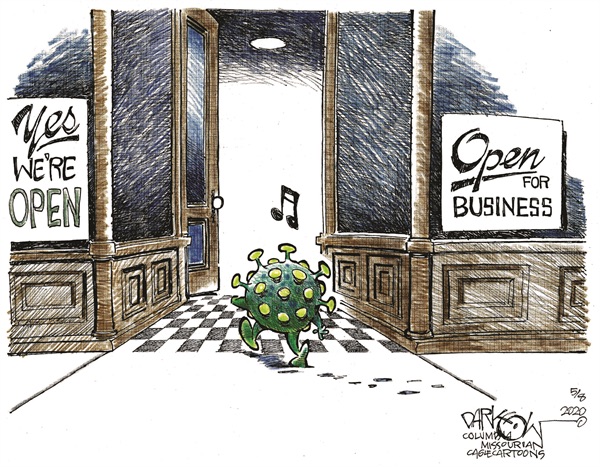The virus that causes COVID-19 can be transmitted when we breathe in the air that an infected person exhales. From there it’s a matter of probabilities.
Breathing in just one particle of COVID-19 virus is unlikely to infect a person. It might not land on a favorable cell to infect. Breathe in 10,000 virus particles, and the probability of infection increases accordingly.
Exhaled air close to an infected person will have a high concentration of the virus in it. Farther away from the person, the concentration decreases as the air spreads out. This is why we keep our distance from other people. The farther away the better.
Outside, a mild breeze blows away and dissipates the virus. The concentration spreads out and eventually decreases to a point where it is unlikely to infect anyone else. Again, it’s a game of probabilities, and it depends on how many infected people are around, how close they are to you, and which way the wind blows.
Riding a bicycle or jogging outside, as long as one is not surrounded by a large group of people, should be safe and not require a mask. The beach should also be a safe place, as there is usually a gentle breeze, again provided people keep an appropriate distance away from other groups of people.
If the only occupant in a car, driving should not require a mask. Add a passenger in the car? Roll down the windows — or turn the car vent on to blow in good fresh air from outside and roll the windows down just a crack, about a quarter inch, to create a suction that sucks out the potentially dangerous exhaled air. (To test the suction, hold up a sheet of paper to the window. It should stay there if suction is in effect.)
Combine airflow with wearing homemade masks to keep exhaled air from blowing into other people’s faces, and those simple precautions should help lower the possibility of the virus being transmitted from one person to another while riding in a car together.
Why would anyone share a car with an infected person? Many COVID patients are asymptomatic, which means they don’t even know they have it, but they can transmit it to others.
Indoors, two open windows or doors, one on each side of the room, creates a cross-draft to blow air in one side and out the other. Two fans can function in the same way, one blowing air from outside, and the other fan on the other side of the room is blowing out the hot room air.
And, wearing a mask may help protect others. Air we breathe out isn’t projected forward as much, or toward other people.
Density of virus in the air we breathe is one factor. Another factor is time. How long are we in a potentially infected environment? The longer we spend in a place surrounded by other people breathing in infected air, the higher our chances of becoming infected.
Walking past an infected person in a well-ventilated area is not as hazardous as spending a long time together with that infected person in an enclosed area, And if that unknowingly infected person is wearing a mask, the air they exhale isn’t blown in your face.
So, just remember: the COVID-19 virus is primarily transmitted by breathing in air which an infected person has exhaled. We need to figure out how to ventilate our buildings so exhaled air is drawn away from other people. Outside is likely a safe place to be, as long as we’re not too close to other people.
Or, how about barbers wear a mask with two hoses, one for breathing in clean air from a safe location, the other for breathing out potentially infected air to another location sufficiently far from the customer. A simple one-way valve in each hose will enforce the airflow direction. Combined with decent ventilation indoors, some sufficiently separated chairs outdoors for waiting customers, and maybe I can get a haircut again.




